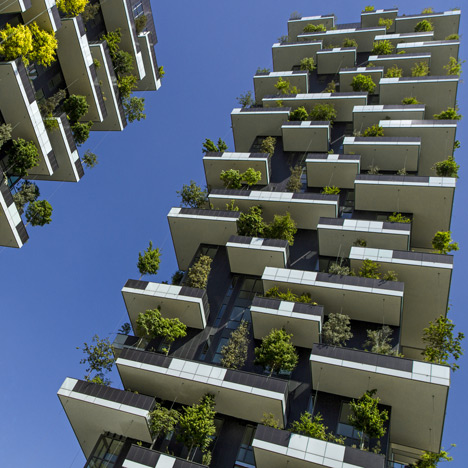Europe’s Floating Forests: The Mysterious Bosco Verticale of Italy
Europe, with its rich tapestry of cultures and landscapes, is home to some of the most extraordinary architectural marvels. One such wonder that has captured the imagination of both locals and tourists alike is the Bosco Verticale, a breathtaking manifestation of sustainable living in the heart of Italy.
Exploring the Vertical Forest Concept
A Green Oasis in the Concrete Jungle
Imagine a city skyline where towering structures are not just concrete and steel but living, breathing entities that contribute to the environment. This is the essence of the Bosco Verticale, a pair of residential towers located in the bustling metropolis of Milan. These high-rises are not your typical glass-and-steel structures; instead, they are adorned with lush vegetation, creating a vertical forest that challenges traditional notions of urban architecture.
Innovative Design and Sustainability
The Architectural Vision of Stefano Boeri
The mastermind behind this green oasis is the acclaimed Italian architect Stefano Boeri. Known for his innovative approach to urban planning and sustainable architecture, Boeri envisioned a city where nature and human development coexist harmoniously. The Bosco Verticale, completed in 2014, is a testament to this vision, featuring terraces overflowing with trees, shrubs, and other flora.
The Environmental Impact of Vertical Forests
The environmental benefits of the Bosco Verticale extend far beyond its aesthetic appeal. The abundance of greenery helps improve air quality by absorbing carbon dioxide and releasing oxygen. Additionally, the vertical forest acts as a natural insulator, reducing the need for artificial heating and cooling within the buildings. This not only lowers energy consumption but also contributes to a more sustainable and eco-friendly urban lifestyle.
Living Amidst Nature in the Sky
Residential Life in the Bosco Verticale
While the exterior of the Bosco Verticale is a sight to behold, the interior spaces are equally impressive. The towers house a diverse range of residential units, from cozy apartments to luxurious penthouses. Residents have the unique experience of living surrounded by nature high above the city streets. The vegetation not only provides a stunning backdrop but also offers shade and privacy to the residents.
Challenges and Successes
Implementing such an ambitious project was not without its challenges. The engineering and logistical complexities of constructing and maintaining a vertical forest of this scale required careful planning and expertise. However, the Bosco Verticale has emerged as a shining example of the successful integration of nature into urban spaces, inspiring similar projects around the world.
Global Impact and Future Possibilities
The Bosco Verticale Phenomenon Spreads
The impact of the Bosco Verticale reaches far beyond the city limits of Milan. The concept has sparked interest and emulation globally, with architects and urban planners exploring ways to incorporate vertical forests into their own cityscapes. The idea of marrying modern living with a thriving natural environment is gaining traction as societies seek sustainable solutions to the challenges posed by rapid urbanization.
What Lies Ahead for Vertical Forests?
As the world grapples with environmental issues and seeks innovative solutions, the future looks promising for vertical forests. The success of the Bosco Verticale has paved the way for similar projects in different parts of the world, each adapting the concept to suit its unique urban challenges. The integration of nature into urban planning is not just a trend but a necessity for creating healthier, more livable cities.
Frequently Asked Questions (FAQs)
1. Are vertical forests only a luxury for the wealthy?
No, the concept of vertical forests is not limited to luxury developments. While projects like the Bosco Verticale may have a more upscale appeal, the idea of incorporating green spaces into urban architecture is adaptable to various economic contexts. In fact, there are initiatives to create affordable and sustainable housing with vertical forest elements to ensure that the benefits of this innovative approach are accessible to a broader demographic.
2. How do vertical forests contribute to biodiversity in urban areas?
Vertical forests provide a unique opportunity to reintroduce biodiversity into densely populated urban areas. The variety of plant species on the towers attracts insects, birds, and other wildlife, creating miniature ecosystems. This not only enhances the urban environment but also contributes to the conservation of biodiversity by providing habitats for flora and fauna that may be displaced by urban development.
3. Can vertical forests be retrofitted into existing buildings?
While retrofitting existing buildings with vertical forests presents certain challenges, it is not an impossible feat. Architects and engineers are exploring ways to integrate greenery into the facades of older structures, enhancing their environmental performance and aesthetic appeal. As technology advances and the demand for sustainable urban living grows, we can expect to see more creative solutions for retrofitting vertical forests into existing urban landscapes.

